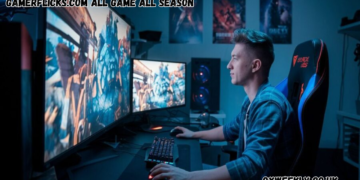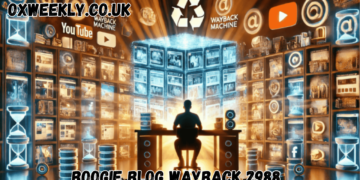The working day’s over, but the real rituals are just beginning. Welcome to the new era of adult downtime, where digital comfort meets personal choice.
For many people, the hours after work have become sacred. Not in the candlelit, silent-meditation sense—though that has its fans—but in the reliably comforting, casually curated rituals we build for ourselves. In 2025, winding down isn’t just about putting your feet up. It’s a strategic blend of pleasure, pause and now increasingly, play.
Evenings now have a shape. You’ll see it in the student who makes a mug of tea and puts on a true crime podcast or the remote worker flicking through three different delivery apps before settling on the same noodles they always get. These aren’t quirks. They’re intentionally repetitive patterns, designed to soothe and reset the brain after a day of cognitive effort.
A big part of this unwind routine involves short, immersive digital windows. Whether it’s reading Reddit threads, watching two reels before brushing your teeth, or logging in to continue playing your favourite games, many people now build their downtime around brief, low-effort digital interactions. Platforms that support this kind of engagement—ones that let you pause and pick up again later—are slotting perfectly into evening habits.
The Psychology of Micro-Reward
Part of the appeal lies in how the brain craves predictability after a day of unpredictable demands. Neuroscientists have noted that the brain responds positively to “completions,” small goals achieved, decisions made, games finished or resumed. These actions, even when low-stakes, signal closure. In that sense, activities like online gaming aren’t just distractions. They’re controlled environments that offer adults something rare: a win, however small, at the end of the day.
Research published earlier this year suggests that predictable digital rituals can actually support mental well-being, so long as they’re balanced with some offline time. The key is intentionality. “Ritualised use of technology can be grounding,” says therapist Gina Buckley in the piece. “The trick is to make sure the screen is serving you, not the other way around.”
It’s a useful reframing. Playing games, for example, no longer has to carry a sense of indulgent guilt. With platforms increasingly designed around user pacing and preference, returning to a game is less about compulsion and more about choice. You can simply log in to continue playing your favourite games, pick up where you left off, then step away when you’re ready.
From Passive Consumption to Interactive Flow
Television still has its place in the evening unwind ritual, but for a growing number of adults, static viewing isn’t quite enough. Interactivity matters now. It’s why Wordle exploded and why puzzle apps are thriving. Why online games with low commitment but high payoff are quietly dominating. They offer active rest; not taxing, but engaging just enough to pull your mind out of work mode without draining what little energy you’ve got left.
There’s also the appeal of narrative. Games that unfold over time or offer light progression systems give players something to return to. They become part of a personal story, not just something to “beat.” That continuation—the ability to return on your own terms—is what gives these rituals their staying power.
Take, for instance, someone who plays three rounds of a simple strategy game every night after dinner. They’re not chasing novelty. They’re reaching for familiarity. That evening habit becomes a signpost that the day is done, and something slower has begun.
Rituals Built Around Screens—and Sanity
This doesn’t mean it’s all screens all the time. In fact, many adults are getting sharper at knowing when to step away. Reading, cooking, journaling, stretching, and quick walks are still part of the mix. The modern wind-down isn’t about replacing these with tech; it’s about weaving the two together in a way that works.
People are increasingly using apps to navigate emotional dynamics alongside real-world relationships. What might seem like a question of digital intimacy actually points to something broader: technology has become deeply woven into how adults make sense of their lives, even in their most private moments.
A Generation in Tune With Their Evenings
The biggest difference between now and a decade ago? People talk about these rituals. They trade them. Post them. Curate them. There’s less shame in saying, “I need 20 minutes of silly phone time before I can function again.” What might’ve once been seen as laziness now reads as self-regulation.
Some even gamify their evenings, using habit trackers, wellness streaks, guided routines. Others take a looser approach, floating from podcast to playlist to puzzle, like a low-stakes digital buffet. There’s no right way, and that’s sort of the point. The post-work ritual is about agency. You’ve had a day full of expectations. Now it’s your turn to decide what comes next.
By the time bedtime rolls around, maybe you’ve journaled. Maybe you’ve watched half an episode of a series you’ll never finish. Maybe you’ve played the same game for fifteen minutes, just enough to get a small win. And then you shut the screen, exhale, and know that—for today at least—your work is done.
Also Read: Buy Anti Anxiety Rivotril 2 mg Medicine Online at Cheapest Rates
































